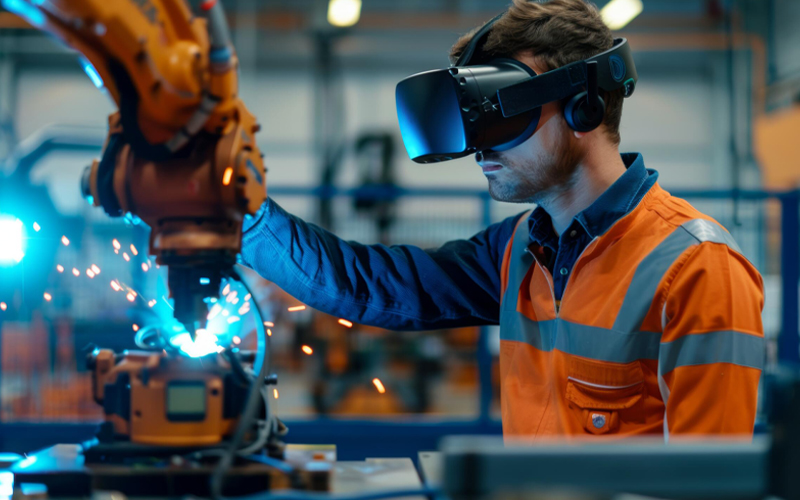As manufacturing plants across the globe embrace digital transformation, the shift towards smart manufacturing is evidently accelerating. Smart factories are leveraging cutting-edge technologies, such as the industrial internet of things (IIoT), artificial intelligence (AI), and machine learning (ML), to optimise production processes, improve efficiency, and reduce costs, providing us with an arena of boundless potential that we once only dreamt of.
But every silver cloud has a hint of grey, and for smart manufacturing, that shade comes in the form of security challenges. Smart manufacturing plants can get targeted by a range of cyber threats, including malware infections, ransomware attacks, denial-of-service (DoS) attacks, and supply chain attacks.
Enhancing Smart Manufacturing with Robust Cybersecurity
Smart manufacturing seeks to incorporate technology into every nook and cranny of the production process. These systems connect devices, machines, and often entire factories to create a seamless, real-time flow of information. However, when everything is connected, it can also mean that everything becomes vulnerable. Security breaches can disrupt not just a singular device but entire manufacturing chains. A solitary hacker infiltrating a network can not only potentially halt the production line but also cause financial loss and endanger lives.
In addition to the perils of interconnectivity, many more potential security challenges are also evident on the path to smart manufacturing. Smart factories utilise a wide range of technologies from different vendors. This heterogeneity can make it challenging to implement a consistent security posture across the entire environment. Furthermore, they often rely on remote access to enable remote monitoring and management of operations. This remote access can create additional security vulnerabilities.
Another layer of complexity arises during integration. While incorporating technology, most manufacturers do not start afresh; they upgrade. This means they integrate new technologies with old legacy systems. These older systems weren't designed with today's security challenges in mind. Hence, even if the new components are secure, the older parts might provide a convenient backdoor for malicious entities.
The way forward
There are several steps that manufacturers can take to keep up with Joneses, aka hackers, such as:
- Implementing a security-by-design approach: Security should be considered at every stage of the smart manufacturing lifecycle, from design and development to deployment and operation. This approach will help to reduce the number of security vulnerabilities in smart manufacturing systems.
- Segmenting the network: Segmenting the network into different zones with different levels of access can help limit the impact of a security breach.
- Implementing strong access control measures: Strong access control measures, such as multi-factor authentication and role-based access control, can help to prevent unauthorised access to smart manufacturing systems.
In addition to the above, manufacturers also need to embrace a culture of continuous learning and updating. Here, digital learning solutions and services can play a pivotal role in upskilling staff and keeping them abreast of the latest protocols of cybersecurity. Digital learning services can provide interactive training courses on a variety of cybersecurity topics, such as malware awareness, phishing prevention, and password management.
Understand that rigorous testing and robust defence mechanisms are a must. And this isn't just about firewalls and antivirus programs. It's about mitigating the unique challenges of the manufacturing sector and developing bespoke solutions. Regular audits, stress-testing of systems, and even ethical hacking attempts can provide insights into potential vulnerabilities.
Collaboration is another keyword. Manufacturers, tech providers and even competitors need to come together, sharing knowledge and best practices. Only by pooling resources and expertise can the industry hope to tackle the mammoth challenge of security in smart manufacturing.
To summarise, smart manufacturing is the way of the future. Its potential is undeniable. But with great power comes great responsibility. Ensuring the security of these systems is not just about protecting business interests. It's about safeguarding the future of manufacturing and, by extension, the global economy.
As we navigate the path to smart manufacturing, we also need to understand that mitigating security is not a one-time effort but an ongoing commitment. Embracing a culture of continuous improvement & adaptability and manufacturing outsourcing is a must to ensure that smart manufacturing remains a beacon of innovation and efficiency in the manufacturing world and does not become a victim at the hands of cyber threats.
*For organizations on the digital transformation journey, agility is key in responding to a rapidly changing technology and business landscape. Now more than ever, it is crucial to deliver and exceed on organizational expectations with a robust digital mindset backed by innovation. Enabling businesses to sense, learn, respond, and evolve like a living organism, will be imperative for business excellence going forward. A comprehensive, yet modular suite of services is doing exactly that. Equipping organizations with intuitive decision-making automatically at scale, actionable insights based on real-time solutions, anytime/anywhere experience, and in-depth data visibility across functions leading to hyper-productivity, Live Enterprise is building connected organizations that are innovating collaboratively for the future.







